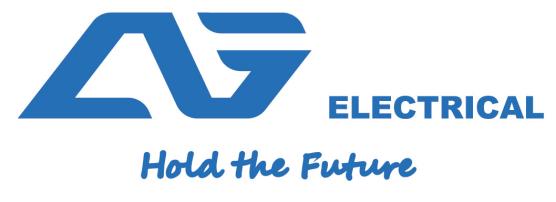AG ELECTRICAL- TOP3 SUPPLIER IN CHINA
Across European, Asian and North American EV manufacturers there are a broad variety of connector types. This often leaves buyers wondering whether their home charger will have the right connector. Or whether on-the-road charging stations will be compatible with their electric vehicle model.
To understand this breadth, we can look to the connector types for the different regions; AC vs DC chargers; and why EV chargers are not simple, 3-pin plugs.
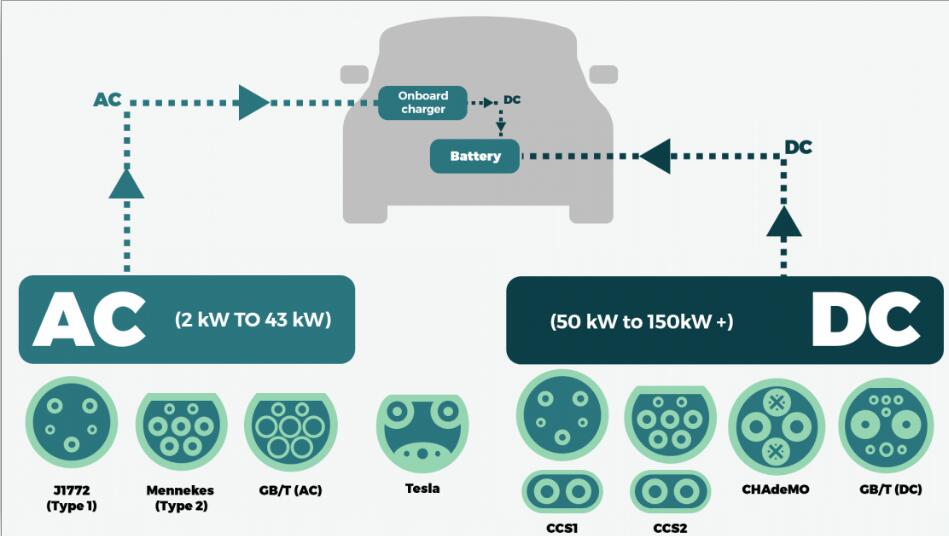
In an ideal world, electric vehicles would have 3-pin plugs that you could easily connect to your home electricity. If this were the case, it’s likely that EVs sales would skyrocket and charging solutions would be considerably simpler. However, there are 3 key reasons why simple 3-pin plugs aren’t in the typical EV connector design:
l They don’t take enough current – you would need at least 11kW and up to 43 kW, even for AC connections
l Connectors need to be watertight and rustproof – poor weather could blow your whole mains connection with the current household plug
l EVs need to communicate two-ways with charging equipment – this means we need extra signals, besides positive and negative
For this reason, connector types for EVs are far more robust than your plugs for ordinary sockets.
There are a variety of AC, EV connectors, which generally vary by the regional manufacturers.
Domestic supplies are typically 7kW, but if plugged into a fast charger, you can reach 22kW to charge an EV. In fact, some electric vehicles, such as the Renault ZOE, can reach 43kW through the same plug, which is twice the typical charging rate.
North America was the first continent to formally come up with specifications for EV charging, in the form of J1772 (Type 1). This connector only supports single phase charging and can be found in North America and Japan.
As an AC charger, the J1772 has 3 main pins for carrying the current and 2 smaller pins for communication between the EV and charging equipment. Of the smaller pins:
l The proximity pilot (PP) pin tells the charging equipment the type of cable connected to the socket – different cable thicknesses can cope with different amounts of electrical current
l The control pilot (CP) pin provides bi-directional communications between the electric vehicle and charging system. This checks the maximum amount of current that the EV is able to take at any one time.
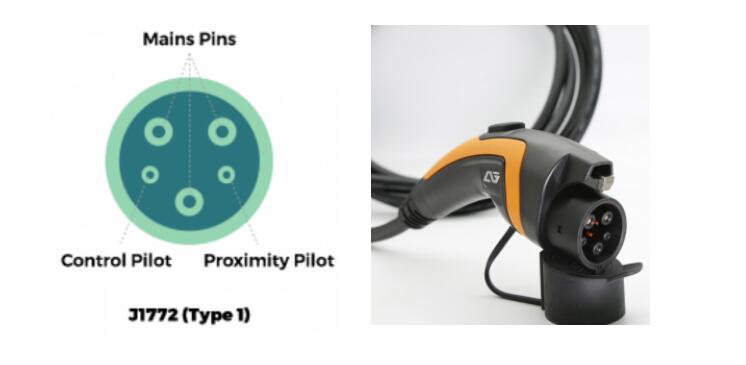
Within Europe, you would rarely encounter a Type 1 charger, instead you would find the Mennekes (Type 2). This has been the official charging plug within Europe since 2013.
Most households only support single phase AC charging. However, as this connector is not too awkward, it can fit in 3 phase electrical supplies.
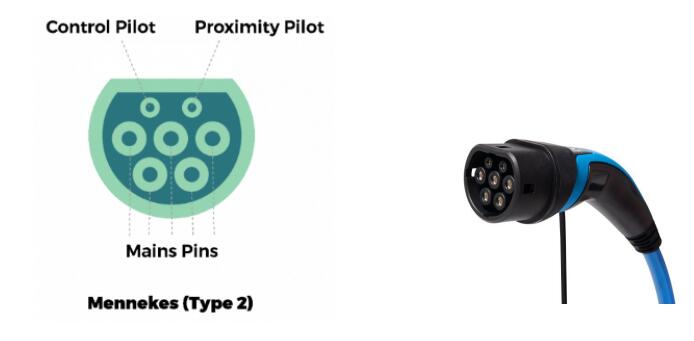
As the EV market expands and more and more people turn to charging electric cars at home, we perhaps need to do better than the typical 22-43 kW. And to exceed this, the only real option is to consider DC charging at home. Therefore, for home charging, there’s a need to change standards and move away from AC and towards DC.
DC – EV Connectors
DC connectors are typically found at services and within fleet chargers. Rapid DC chargers typically start at a charging rate of 50kW, whereas ultra-rapid chargers can charge at 100-150+kW. Occasionally these can reach as high as 350kw.
CHAdeMO EV Connector – Japan
he first attempt at a DC charger was the Japanese CHAdeMO, which is now used as the official standard in Japan for all DC fast chargers. Within North America, it is not widely used, apart from with Nissan and Mitsubishi manufactured models.
The CHAdeMO can charge at 50KW and holds 2 pins side-by-side to carry the DC current.
he first attempt at a DC charger was the Japanese CHAdeMO, which is now used as the official standard in Japan for all DC fast chargers. Within North America, it is not widely used, apart from with Nissan and Mitsubishi manufactured models.
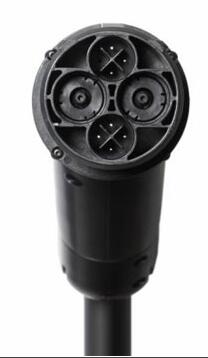
The CHAdeMO can charge at 50KW and holds 2 pins side-by-side to carry the DC current.
CCS1 & CCS2 EV Connector – North America / EU & Rest of Market
Combined Charging System (CCS) covers Combo 1 (CCS1) and Combo 2 (CCS2) chargers.
From the late 2010s, the next generation of chargers combined Type1 / Type 2 chargers with a thick DC current connector to create the CCS1 (North America) and the CCS2 (EU).
The communication protocols change to IP over mains, meaning that the charger conveys internet protocol data.
This combination connector means that the car is adaptable in that it can take AC charge through a connector in the top half or DC charge via the 2 combined connector parts.
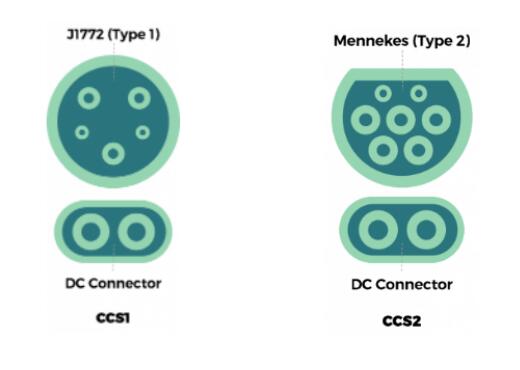
GB/T Connectors – China (AC & DC)
Holding the world’s largest EV market share, Chinese manufactured connectors differ from the rest of the world.
The GB/T (Guobiao standard) for basic AC charging is effectively an inverse of the Mennekes, for basic AC charging.
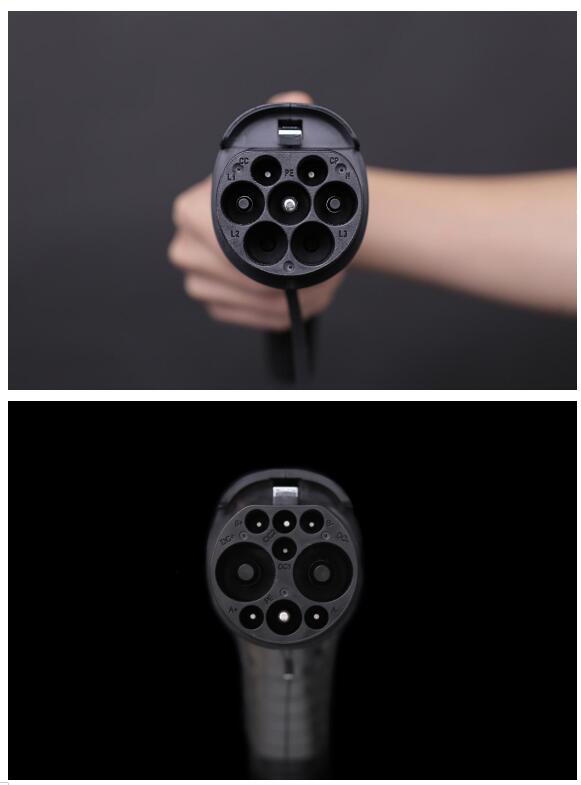
It’s unlikely that the kW charge will reach much higher than current levels. Ultimately, EV battery size will soon top out and we won’t be using batteries much bigger than 100 kWh for electric cars. Currently, 50 kWh gives drivers 200 miles range. It’s not necessary that the everyday car will need much more than 400 miles.
Of the EV connectors, it has long been predicted that the CHAdeMO will eventually fall into disuse. European EV models (Audi, BMW, Renault, Mercedes, Volkswagen & Volvo) all favour the CCS & Type 2 chargers.
Historically, Asian manufacturers (Nissan & Mitsubishi) have favoured the CHAdeMO and Type 1 chargers. However, an increasing number of these Asian manufacturers are now switching to European AC standards for their next generation models.
Further, with recent Chinese announcements of a national standard for wireless EV charging, the future may well be hands-free.
AG ELECTRICAL- HOLD THE FUTURE
